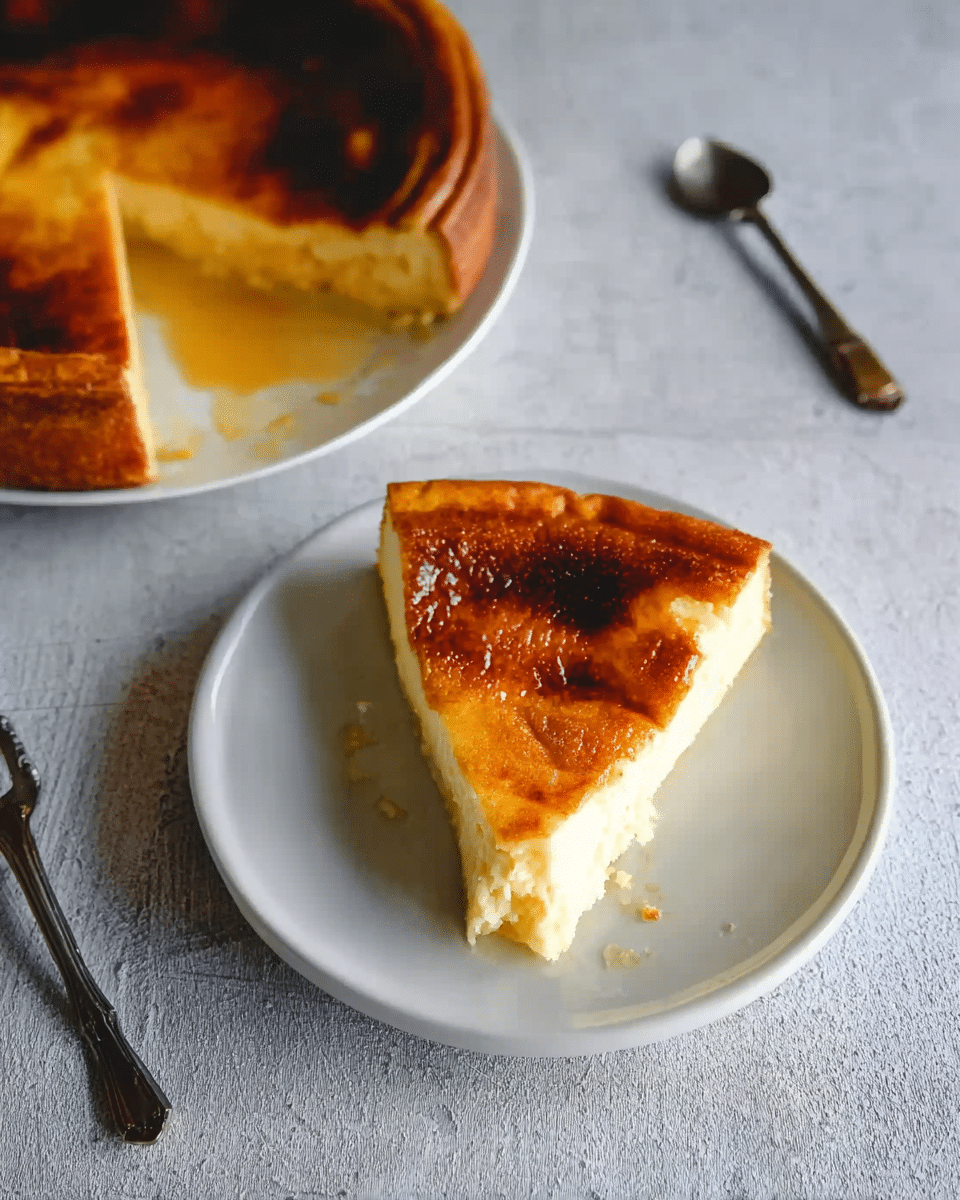A Taste of Tradition: The Origins of Melopita
The roots of Melopita trace back to the island of Sifnos, where this dessert has been passed down through generations. The island’s culinary traditions are deeply influenced by the Mediterranean landscape, using locally sourced ingredients such as honey, olive oil, and cheese. Honey, particularly thyme honey, is a staple in Greek cooking and adds a natural sweetness to many traditional desserts.
In Sifnos, the pie was historically prepared for special occasions, including festivals and religious celebrations, but its simple ingredients make it an everyday treat as well. Its popularity has spread beyond the island, with variations of Melopita being made across Greece. The recipe is a reflection of the Greek culinary philosophy: using fresh, quality ingredients to create something wholesome and delicious without unnecessary complexity.
The Simplicity and Richness of the Ingredients
Melopita’s beauty lies in its simplicity. The five main ingredients—ricotta cheese, honey, eggs, corn flour, and vanilla extract—each play a vital role in creating the perfect balance of flavors and textures. Ricotta cheese serves as the creamy base for the filling, contributing a light, slightly sweet, and slightly tangy flavor. The honey, which is the soul of the dish, adds a delicate sweetness and floral aroma. In many Greek versions of this dessert, local thyme honey is used, which enhances the pie with a unique, herbaceous sweetness.
Eggs help bind the ingredients together, giving the pie structure and a custardy texture that makes each bite melt in your mouth. Corn flour (or cornstarch) thickens the mixture, ensuring the pie sets without the need for a crust or baking in a water bath. The vanilla extract adds depth and warmth, rounding out the other flavors and enhancing the natural sweetness of the honey.
This combination of ingredients results in a dessert that is both light and rich. The texture is creamy and custard-like, with just the right amount of sweetness to complement the mild tang of the ricotta. The crustless design allows the filling to take center stage, providing a simple yet luxurious dessert experience.
Baking Melopita: The Art of Simplicity
The process of making Melopita is straightforward and requires little hands-on time. After preparing the filling by whisking the ingredients together until smooth, the mixture is poured into a greased springform pan. This method ensures that the pie will hold its shape and can be easily removed from the pan once baked.
The baking process takes about 45 to 50 minutes, during which the top of the pie becomes golden brown, and the center sets. Unlike other cheesecakes, Melopita does not require a long bake time or complicated techniques such as water baths to achieve its creamy texture. Instead, it bakes to perfection with minimal effort, making it an ideal dessert for home bakers of all skill levels.
Once baked, the pie is left to cool slightly before being transferred to the fridge for a few hours to set completely. The cooling process is crucial, as it allows the pie to firm up and become sliceable. While it’s tempting to dive right in, letting Melopita chill in the fridge gives it the time it needs to fully develop its flavors and achieve the perfect texture.
Serving Melopita: A Beautiful and Elegant Dessert
After the pie has chilled and set, it’s ready to be served. The beauty of Melopita is in its simplicity—its soft, golden-brown top and smooth, creamy filling speak for themselves. However, a drizzle of honey and a dusting of ground cinnamon add the perfect finishing touch, elevating the dessert without overpowering its natural flavors.
The honey drizzle enhances the sweetness and adds a glossy sheen to the surface, while the cinnamon provides a hint of spice that complements the rich flavors of the cheese and honey. These final touches not only make the pie visually appealing but also add depth and complexity to the flavor.
Melopita can be served as individual slices or as a whole pie, depending on the occasion. It pairs wonderfully with a cup of coffee or tea, making it a perfect dessert for afternoon gatherings or light evening meals. Its delicate sweetness and smooth texture make it a lovely finish to any meal, whether you’re hosting a formal dinner or enjoying a casual family supper.
Melopita’s Gluten-Free Appeal
As a naturally gluten-free dessert, Melopita is a fantastic option for those with gluten sensitivities or celiac disease. Unlike many traditional cheesecakes that require a graham cracker crust or flour-based ingredients, this Greek honey and cheese pie skips the crust altogether, allowing the flavors of the ricotta, honey, and eggs to shine. This makes it an excellent choice for a wide range of dietary needs, ensuring that everyone at the table can enjoy a slice of this delightful dessert.
Even those who don’t have dietary restrictions will appreciate Melopita’s lightness and elegance. It offers the richness of a cheesecake without the heaviness often associated with other dessert pies. Its simplicity makes it suitable for various occasions, from casual gatherings to more formal celebrations.
The Versatility of Melopita: Variations and Modifications
While the traditional Melopita recipe is made with ricotta cheese and honey, there are several ways you can modify the dish to suit your preferences. For instance, you can experiment with different types of honey, such as orange blossom or lavender honey, to create a unique flavor profile. If you’re looking for a more indulgent version, you could incorporate a touch of mascarpone cheese to make the filling richer and creamier.
For those who enjoy a hint of citrus, you could add lemon or orange zest to the filling to enhance the pie’s fresh, bright flavors. Additionally, a few fresh berries or a berry compote can be served alongside the pie, adding a pop of color and an additional layer of flavor that pairs beautifully with the honey and cheese.
If you’re looking to make the pie even lighter, you could reduce the amount of honey or substitute it with a natural sweetener like maple syrup or agave nectar, depending on your preferences. The recipe is flexible, allowing for creativity while maintaining the essence of the traditional Greek dessert.
Health Considerations of Melopita
Despite its rich, creamy texture, Melopita is a relatively light dessert when compared to many other pies and cakes. The use of ricotta cheese provides a good source of protein, while the honey offers a more natural form of sweetness compared to refined sugars. The absence of a crust means fewer carbs, and the corn flour (cornstarch) used as a thickening agent is a gluten-free alternative to traditional flour.
However, it is important to note that Melopita does contain eggs and dairy, so those who follow a dairy-free or vegan diet would need to find appropriate substitutes for the ricotta and eggs. Additionally, the use of honey means that this dessert is not suitable for vegans, but it can be easily modified to suit different dietary preferences.
Conclusion
Melopita is a simple, elegant, and indulgent dessert that highlights the best of Greek cuisine. With just a handful of ingredients, this traditional Greek Honey & Cheese Pie creates a deliciously creamy filling with the perfect balance of sweetness and richness. Its crustless design makes it a lighter alternative to many other pies and cheesecakes, and its gluten-free nature makes it accessible to a wider audience. Whether served at a special occasion, a family dinner, or as a sweet treat with a cup of coffee, Melopita is sure to impress. Its timeless flavors and simple preparation make it a must-try dessert for anyone who appreciates the delicate, natural sweetness of honey and the richness of cheese.






